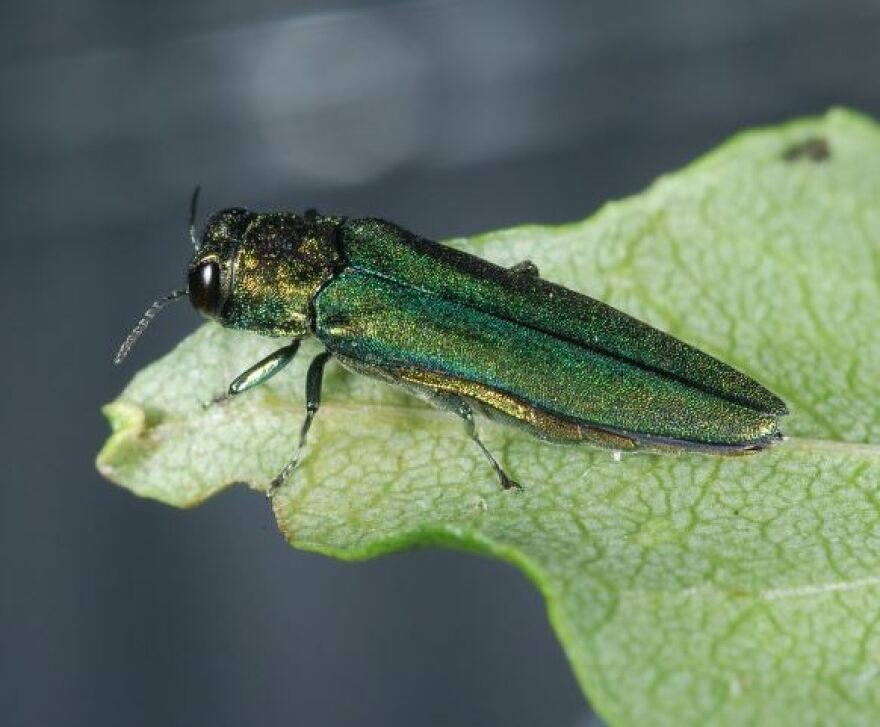Ash trees in forests across Missouri will soon be dead, according to biologists with the Missouri Department of Conservation. That’s because the emerald ash borer or EAB, which infests the trees, continues to spread.
So far, the small, metallic green beetle native to Asia, has been found in 89 Missouri counties and the City of St. Louis.
MDC forest entomologist, Robbie Doerhoff, said it’s only a matter of time before the insect is confirmed in all Missouri counties.
"I think it's probably already in every county," she said. "It's not everywhere across the state, but I suspect that it's probably in at least a single location in every county."
It’s believed EAB first came into the U.S. on shipping pallets and heavy crating in the Detroit area, and it started spreading from there. It was first found in Missouri in Wayne County in 2008.
Only one in every 1000 ash trees has any natural immunity to EAB, and Doerhoff said the impact in areas where the insect has been found is devastating.
"And, so, in most areas where the beetle has been present for, you know, eight to 10 years, most of the ash are starting to die or have died," she said.

The Missouri Department of Conservation wants owners of land with ash trees to take action now. There are two options: Remove ash trees before they become infested, which Doerhoff said they inevitably will, or treat trees with an insecticide.
And she said homeowners with an ash tree they’d like to try to save should take steps as soon as possible to treat the tree. MDC offers advice from EAB experts on its website, mdc.mo.gov such as how to make sure your tree is an ash, what insecticides to use and when to apply them.
Those with ash trees in their forests have no good options for saving those trees.
"They'll be utilized by woodpeckers and other native insects, and there might be some young ash trees that replace them," said Doerhoff, "but in the long run ash is not going to be a very noticeable tree in our forests. They probably won't be very big before they're killed by emerald ash borer."
Adult beetles feed on ash foliage and do little damage, according to the mdc website. But the EAB larvae feed on the inner bark and disrupt the tree's ability to transport water and nutrients. Saplings to fully mature ash trees can become infested.
Signs that an ash tree has been infested by EAB are woodpecker damage, sprouts growing from the main trunk and major branch loss.
Those trees, Doerhoff said, become brittle quickly and are hazards as they approach death.
"They often shatter when people are trying to cut them down, which is a very dangerous situation as the trunk breaks in multiple places when you're not expecting it," she said, "but they're just hazardous to have near your home."
That’s why she advises taking out ash trees while they’re still alive if you’re not planning to treat them.
Once a tree is taken down, Doerhoff advises burning or chipping the wood to dispose of it.
And if you plan to replace your ash tree, Doerhoff said it’s important to pick the right tree for the right site.
"So, if you want another large shade tree to replace your ash, then there's a number of native Missouri species that would be a good choice," she said.
She suggests white oak, tulip trees or sycamores for larger trees, but she said there are lots of native options for smaller trees.
Again, you can find information about the emerald ash borer and treating ash trees with insecticides at mdc.mo.gov.


